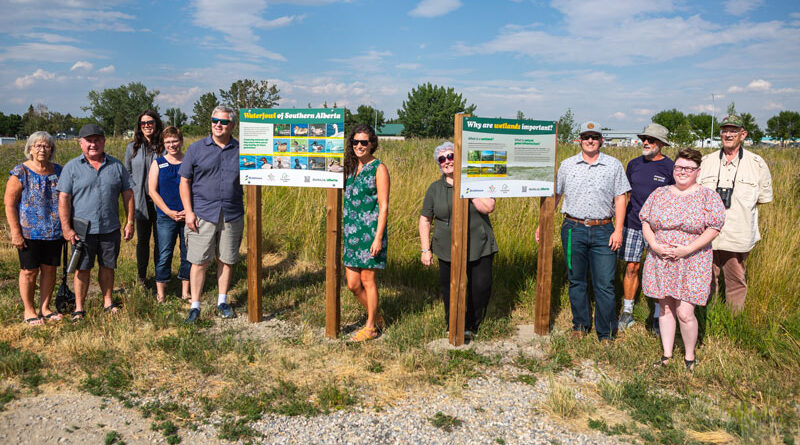New signs unveiled to educate public on local wetlands
By John Watson Local Journalism Initiative Reporter

John Watson Photo
Ducks Unlimited Canada (DUC) and Communities in Bloom (CIB) unveiled four new signs in Strathmore to help raise awareness about the importance of wetlands.
Derek Hallgrimson, DUC conservation programs lead, said the idea is for the signs in the area to help convey to locals the importance of wetlands and the species they support.
“I think it’s great. I think we do lots of work on the landscape but a lot of people in the urban communities don’t exactly know what we’re doing,” said Hallgrimson. “I think it’s great just to see the importance of the wetlands and why we do the conservation work that we do.”
DUC, for the kids in the back who may be unfamiliar, largely focuses on wetland and landscape restoration, as well as conservation.
“We work with producers – were that to be grain farmers or cattle ranchers, and we restore wetlands on the landscape. And we also do conservation easements, which protects the land forever, the upland and the wetland,” explained Hallgrimson who added he hopes the new signs in Strathmore will help locals stay informed and educated, at least regarding the wetlands in their communities.
Rob Pirie, with Strathmore’s branch CIB, said as much as local wetlands are important to be educated about, they are also a distinct part of Strathmore’s heritage.
Strathmore CIB partnered with Ducks Unlimited to erect the new signs because the organization is well poised to give credibility to what they stand for.
“It was probably a two-year discussion. It took a while because of course, this was also part of the Sustainability Committee with the Town of Strathmore and DUC, and CIB,” said Pirie.
Alongside the information provided regarding the local wetlands, DUC also makes information about local bird species and other assorted fauna that make use of the biome easy to access for those who are interested.
“Not a lot of people understand that there is a vast amount of bird species and other species that utilize the wetlands. So, I think it’s just great for educational purposes,” said Hallgrimson. “Everything starts from education. If people understand why we do what we do, then they will support it in the future to come.”
The signs set up in Grey Park display a QR code which passerbys can scan to be immediately directed to information available through DUC, or those who are interested can make their way manually to the DUC website (www.ducks.ca).
